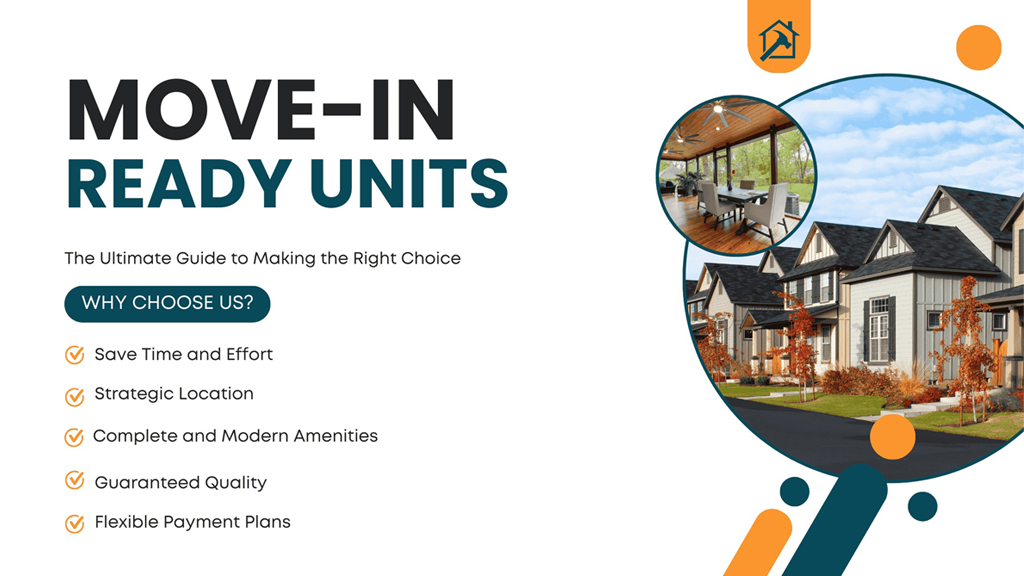The debate between under-construction and ready-to-move-in properties is a common one among homebuyers. Each option has its own set of advantages and challenges, and the right choice depends on your priorities, budget, and long-term goals. In this guide, we’ll explore the key factors to consider, helping you make an informed decision.
Ready-to-Move-In Homes: Why They’re a Hassle-Free Investmen
Save on Rent: The Cost Benefits of Moving in Right Away
One of the biggest advantages of ready-to-move-in properties is the immediate savings on rent. Instead of continuing to pay rent while waiting for a home to be built, you can move in and start using the property right away.
What You See is What You Get: Reviewing Construction Quality Before Buying
When you purchase a ready-to-move-in home, you have the opportunity to inspect the construction quality, layout, and finishing before making a decision. This reduces the risk of unpleasant surprises and ensures you’re getting what you’re paying for.
Explore the Neighborhood: Evaluating Infrastructure and Community
Another benefit is the ability to evaluate the surrounding infrastructure, amenities, and community. You can assess the neighborhood’s suitability for your lifestyle and family before making a commitment.
No Delays, No Surprises: Security in Ready-to-Move-In Properties
With ready-to-move-in properties, there’s no risk of project delays or unexpected costs. You’ll have a clear timeline and immediate possession, giving you peace of mind.
The Price Factor: Why Ready-to-Move-In Homes Are More Expensive
Ready-to-move-in homes often come with a higher price tag because they offer convenience, certainty, and immediate usability. Additionally, the developer’s carrying costs for completed projects, such as maintenance and marketing expenses, are factored into the price.
Under-Construction Properties: A Gamble with High Potential Rewards
Unlock Future Value: The Price Appreciation Advantage
Under-construction properties are typically priced lower than ready-to-move-in homes. This can lead to significant price appreciation by the time the project is completed, especially in high-demand areas.
Custom Choices: Freedom to Choose Layouts and Monitor Progress
Buying a property during its construction phase often allows for customization options. You can choose layouts, finishes, and other details to better suit your preferences.
Flexible Payment Plans: Pre-Purchase Benefits to Watch Out For
Developers often offer flexible payment plans for under-construction properties, making them more affordable in the short term. These plans can help you manage your finances more effectively.
The Risks of Delays: What You Should Know About Uncertainty
One of the biggest risks with under-construction properties is the potential for project delays. Construction timelines can be affected by regulatory issues, labor shortages, or financial problems faced by the developer.
How to Minimize Risks When Buying an Under-Construction Property
To reduce risks, research the developer’s track record, check the project’s RERA registration, and review the construction timeline and payment schedule.
Ready-to-Move-In vs. Under-Construction: Key Factors to Consider
What Are Your Goals: End-Use or Capital Appreciation?
Your decision should align with your primary goal. If you’re looking for a home to live in, a ready-to-move-in property may be ideal. For investment purposes, under-construction properties often offer higher returns.
Location Matters: How to Assess Future Value in Any Area
Evaluate the location’s potential for growth. Proximity to schools, hospitals, public transport, and commercial hubs can significantly impact both usability and resale value.
Understanding Costs: Upfront vs. Long-Term Financial Impact
While ready-to-move-in homes require a larger upfront investment, under-construction properties may involve additional costs like GST, registration fees, and delayed possession expenses.
Avoiding Pitfalls: Questions to Ask Before You Buy
Before purchasing, ask about the developer’s reputation, project timelines, hidden costs, and legal clearances to ensure a smooth buying experience.
The Pandemic Effect: How COVID-19 Has Changed Real Estate Preferences
The global pandemic has shifted buyer priorities, with increased demand for spacious homes, better ventilation, and access to green spaces. Work-from-home trends have also influenced location preferences, with buyers seeking properties in suburban areas.
Expert Tips for Evaluating Real Estate Developers
Research the developer’s past projects, delivery timelines, and customer reviews. Verify legal approvals and RERA registration to ensure credibility.
Financing Your Dream Home: Loan Tips for Ready and Under-Construction Properties
Compare home loan options and interest rates. For under-construction properties, consider pre-EMI payments and understand the financial implications of project delays.
Common Mistakes Buyers Make: Lessons Learned from Real Estate Investors
Avoid rushing into decisions, overlooking hidden costs, and neglecting legal due diligence. Learn from experienced investors to make smarter choices.
Real-Life Stories: Buyers Share Their Experiences with Both Options
Hearing real-life experiences can provide valuable insights into the pros and cons of each option, helping you align your choice with your expectations.
The Future of Real Estate: Trends to Watch in Ready and Under-Construction Properties
Emerging trends such as sustainable construction, smart homes, and integrated townships are shaping the future of real estate. Stay informed to make forward-looking investment decisions.

